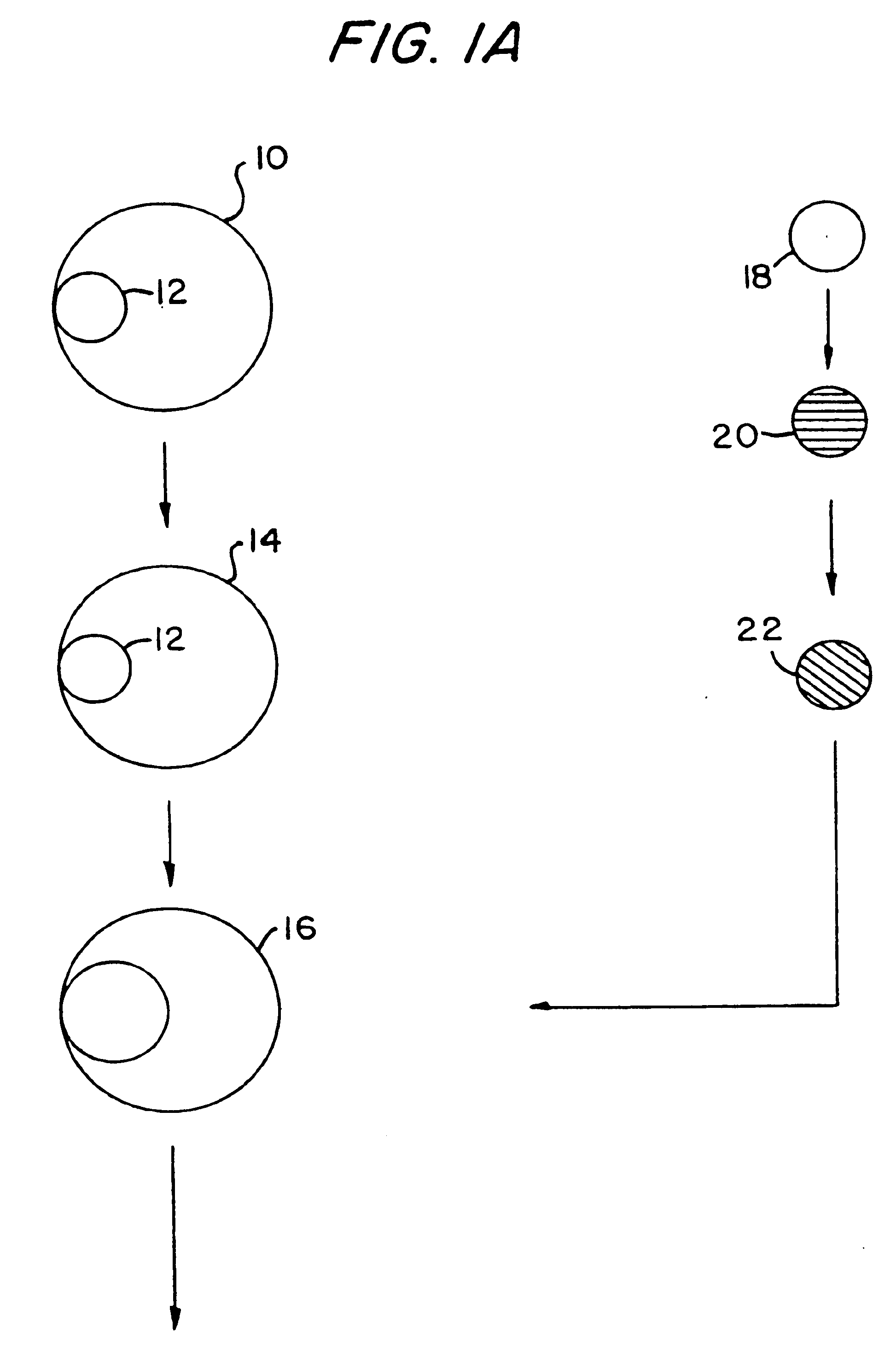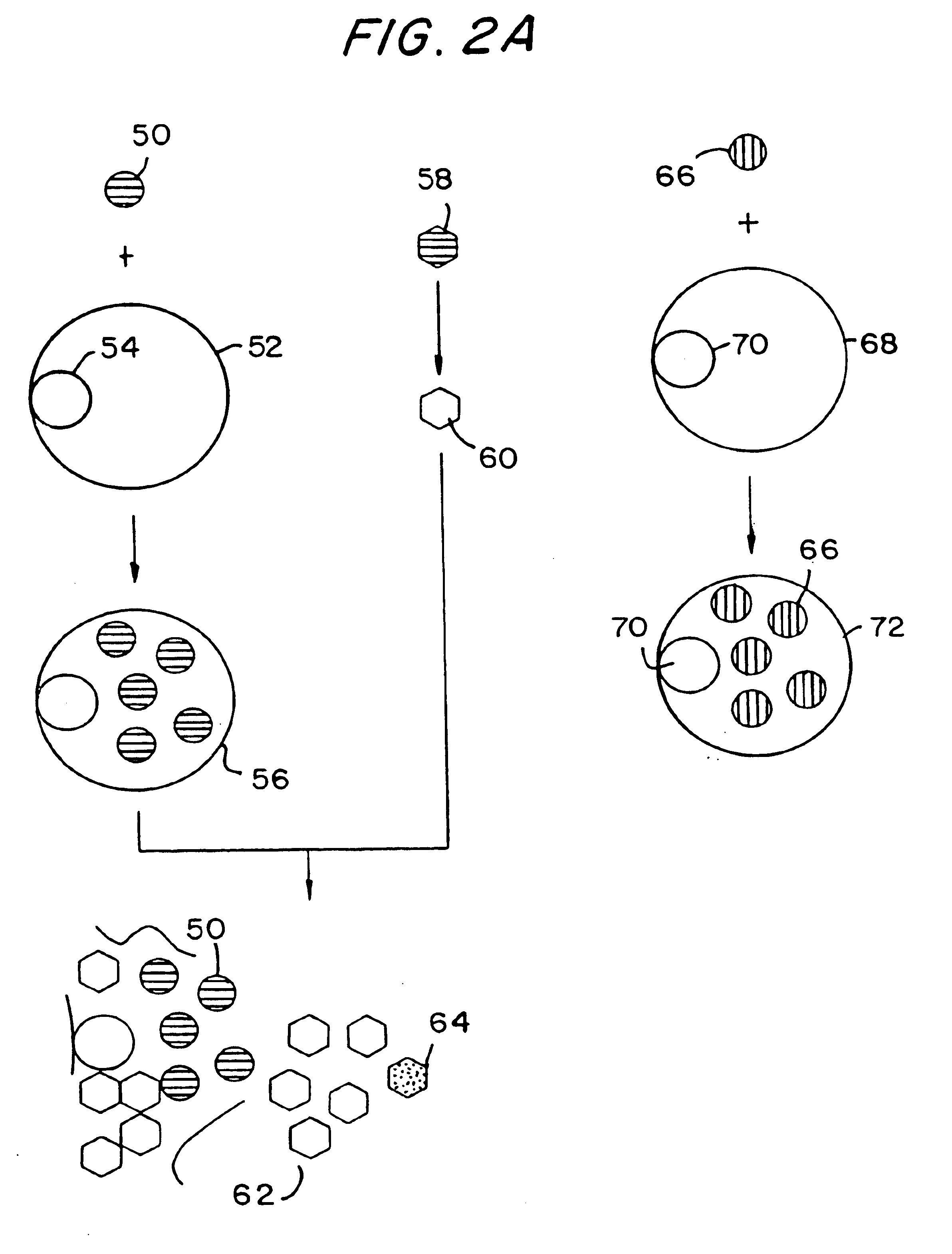Selection methods
a technology of selection methods and methods, applied in the field of selection methods, can solve the problems of reducing the ability of hosts to isolate or create molecules, limiting the usefulness of such methods, and primitive techniques, and achieve the effect of inherent efficiency
- Summary
- Abstract
- Description
- Claims
- Application Information
AI Technical Summary
Benefits of technology
Problems solved by technology
Method used
Image
Examples
example i
Creation of Novel Protease(s) for a Decapeptide Sequence from HIV gp120 Through the Use of Artificial Zymogens and Viral Positive Selection
[0258]Example I describes a method to create endopeptidase(s) specific for a decapeptide recognition sequence from gp120. The method uses gene fusions which encode protein based selection molecules. Novel proteases encoded in a viral population cleave the decapeptide recognition sequence thereby releasing proteins necessary for viral replication. This example is representative of viral positive selection. A simplified representation is set forth in FIGS. 2A, 2B and 2C.
[0259]E. coli B, a host strain for bacteriophage T7, is transformed by the introduction of a plasmid so as to complement T7 deletion mutants. Two different deletion mutant T7 strains are made and so two corresponding E. coli complementary transformants are produced as listed below:
[0260]1) E. coli Transformant 1 (ET1) is transformed with E. coli plasmid pKK177-3 carrying the sequenc...
example ii
Creation of Novel Protease(s) for β-Galactosidase Through the Use of Artificial Zymogens
[0277]Example II describes a method to create endopeptidase(s) with a range of specificity for recognition sequences around the carboxy terminus of β-galactosidase. The method employs a gene fusion involving β-galactosidase and a T7 gene. The selection procedure is based on a novel molecule (protease) cleaving the β-galactosidase which up-modulates the T7 product function necessary for viral replication. Therefore this example represents a viral positive selection procedure. The procedure is generally represented in FIGS. 2A, 2B and 2C.
[0278]Specifically, β-galactosidase in the correct reading frame, is ligated to the amino terminus of each of the T7 genes that are encoded in EST1 and EST2 without stop codons prematurely terminating the fusion protein. The DNA encoding the fusions are then inserted into the pKK177-3 plasmid under the control of the tac promoter.
[0279]E. coli B, a host strain for ...
example iii
Methods to Select Novel Protease(s) Specific for an Epitope of Influenza Haemagglutinin
[0296]Example III describes a method to create an endopeptidase which cleaves specifically a heptapeptide sequence from influenza haemagglutinin (HA) site A (amino acids 140 to 146) (32) The method employs gene fusions involving T7 genes (whose function is down-modulated when complexed in the fusion) and genes from other bacteriophage. The selection procedure is based on a novel molecule (endoprotease) cleaving the influenza HA heptapeptide recognition sequence and thereby up-modulating the function of the T7 product necessary for viral replication. This example represents a viral positive selection procedure. A simplified representation of the method appears in FIGS. 2A, 2B and 2C.
[0297]The heptapeptide recognition sequence is composed of the amino acids 140 to 146 of an influenza HA, AICHI / 2 / 68. The sequence is Lys-Arg-Gly-Pro-Gly-Ser-Gly. (SEQ ID NO: 17).
[0298]Two strains EST1* and EST2* and ar...
PUM
| Property | Measurement | Unit |
|---|---|---|
| Catalytic activity | aaaaa | aaaaa |
Abstract
Description
Claims
Application Information
 Login to View More
Login to View More - R&D
- Intellectual Property
- Life Sciences
- Materials
- Tech Scout
- Unparalleled Data Quality
- Higher Quality Content
- 60% Fewer Hallucinations
Browse by: Latest US Patents, China's latest patents, Technical Efficacy Thesaurus, Application Domain, Technology Topic, Popular Technical Reports.
© 2025 PatSnap. All rights reserved.Legal|Privacy policy|Modern Slavery Act Transparency Statement|Sitemap|About US| Contact US: help@patsnap.com



